Key Customer Service KPIs and How to Improve Them in 2025

Tracking customer service KPIs has become essential for business success in 2025. Studies show that improving customer experience can boost revenue by 10-15%, while poor service costs U.S. companies $75 billion annually. These metrics help you understand how to measure customer service performance and identify areas for improvement.
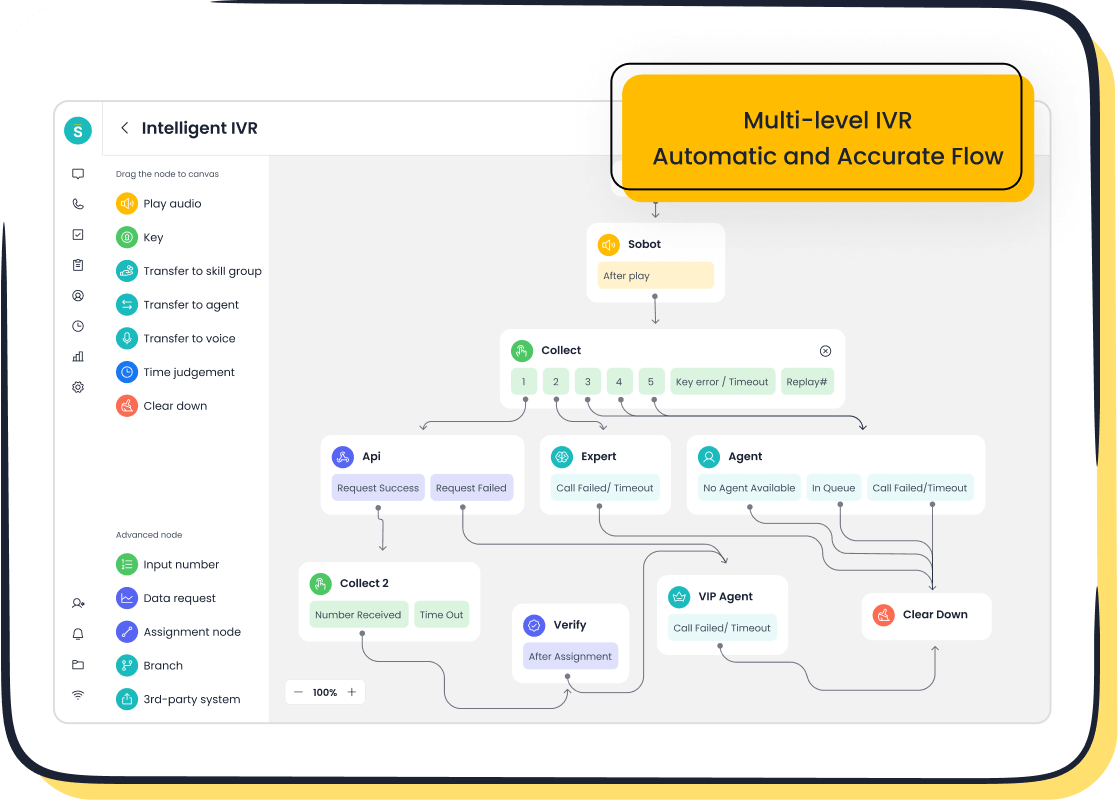
Using tools like Sobot's Voice/Call Center enables you to optimize KPIs such as first-call resolution and customer satisfaction. Its AI-powered features streamline workflows, ensuring faster responses and better outcomes. Businesses leveraging such solutions see measurable improvements, including higher retention rates and operational efficiency.
What Are Customer Service KPIs?
Definition of Customer Service KPIs
Customer service KPIs, or key performance indicators, are measurable metrics that help you evaluate the effectiveness of your customer support efforts. These metrics provide insights into how well your team meets customer expectations and resolves issues. For example, tracking metrics like customer satisfaction score (CSAT) or first contact resolution (FCR) allows you to assess the quality of your service and identify areas for improvement. By focusing on these KPIs, you can ensure that your customer experience aligns with your business goals.
Why Customer Service KPIs Are Essential for Business Growth

Customer service KPIs play a critical role in driving business success. They help you measure customer satisfaction, loyalty, and retention, which are essential for long-term growth. Studies show that 83% of buyers consider good customer service crucial when making purchasing decisions. Metrics like Net Promoter Score (NPS) and CSAT are particularly valuable for understanding customer loyalty and overall business health. By improving these KPIs, you can enhance the customer experience, boost retention rates, and increase revenue. Tools like Sobot's Voice/Call Center can help you monitor and optimize these metrics in real time, ensuring your business stays competitive.
Common Standards for Measuring Customer Service KPIs
Industry benchmarks provide a useful reference for evaluating your customer service KPIs. Here are some common standards:
| KPI | Industry Standard |
|---|---|
| Customer Satisfaction | 75% to 84% (World-class: 85% or higher) |
| Average Handle Time | Approximately 10 minutes |
| Service Level | 80% of calls answered in 20 seconds |
| Agent Turnover | 20% or less |
| Occupancy Rate | 75% to 85% |
| Call Abandon Rate | 6% |
These benchmarks help you understand where your team stands and what improvements are needed. For instance, maintaining a CSAT score above 75% indicates that your customers are generally satisfied with your service. Using advanced tools like Sobot's AI-powered Voicebot can help you meet or exceed these standards by streamlining workflows and improving response times.
Critical Customer Service KPIs to Track in 2025
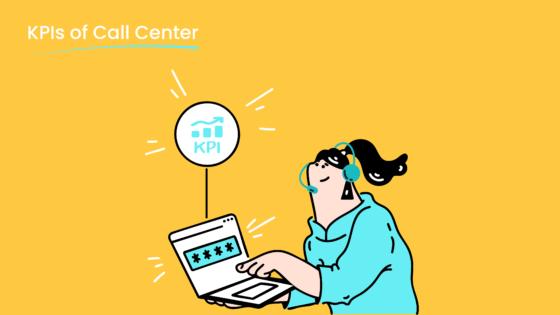
Customer Satisfaction Score (CSAT)
Customer satisfaction score (CSAT) is one of the most widely used metrics to measure how happy customers are with your service. It is typically calculated by asking customers to rate their satisfaction with a specific interaction or overall experience on a scale of 1 to 5. A higher CSAT score indicates that your team is meeting customer expectations effectively.
Tracking CSAT is essential because it directly reflects the quality of your customer service. For example, industries like e-commerce and online search achieved an average customer satisfaction score of 80 in 2023, showing a steady improvement over the previous year. This upward trend highlights the importance of continuously enhancing customer experience to stay competitive.
| Industry | CSAT Score 2023 | Change from Previous Year |
|---|---|---|
| Online search | 80 | +5% |
| E-commerce | 80 | +3% |
| Hotels | 75 | +6% |
| Streaming | 77 | +4% |
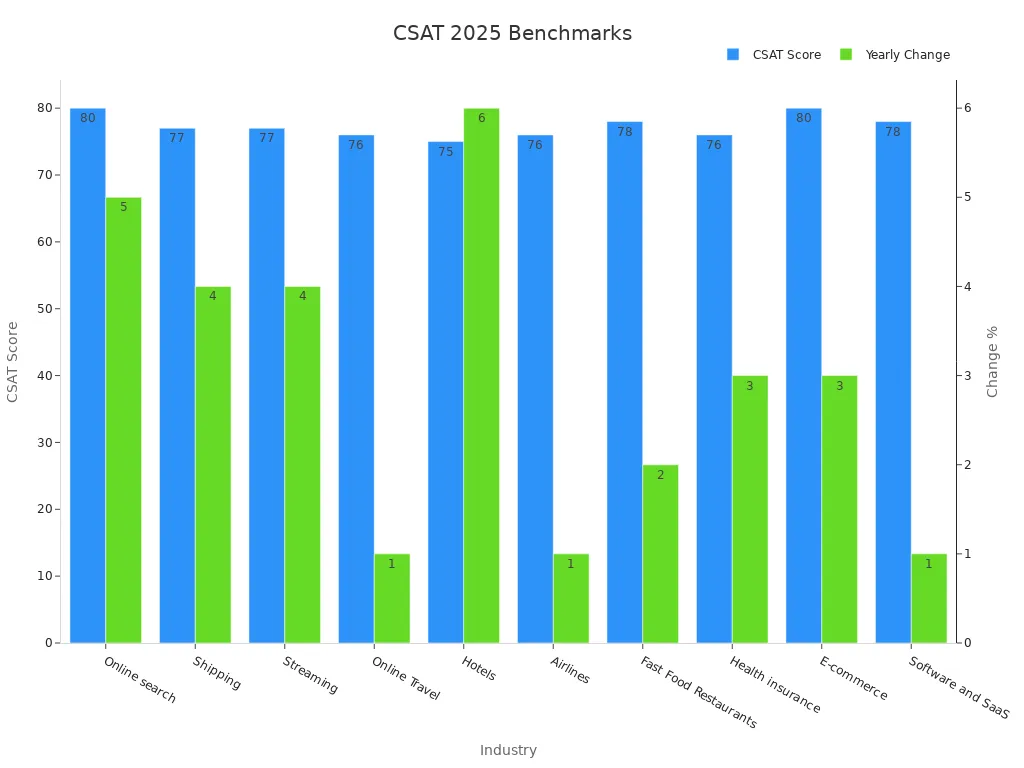
To improve your CSAT, consider using tools like Sobot's Voice/Call Center. Its AI-powered features, such as intelligent IVR and real-time monitoring, help streamline workflows and reduce response times. These capabilities ensure that your customers receive prompt and efficient service, boosting their satisfaction.
Net Promoter Score (NPS)
Net Promoter Score (NPS) measures customer loyalty by asking a simple question: "How likely are you to recommend our service to others?" Customers respond on a scale of 0 to 10, and their answers classify them as promoters, passives, or detractors. NPS is calculated by subtracting the percentage of detractors from the percentage of promoters.
This metric is crucial for understanding long-term customer loyalty and predicting business growth. A high NPS indicates that your customers are not only satisfied but also willing to advocate for your brand. For instance, companies that excel in NPS often see higher retention rates and lower churn.
Improving NPS requires a focus on delivering exceptional customer experiences. Sobot's Omnichannel Solution can play a pivotal role here. By unifying customer interactions across channels like email, social media, and voice, it ensures seamless communication and personalized service. This approach fosters stronger relationships and encourages customers to become promoters of your brand.
First Contact Resolution (FCR)
First Contact Resolution (FCR) measures the percentage of customer issues resolved during the first interaction. It is a critical KPI because it directly impacts customer satisfaction, operational efficiency, and employee morale. Studies show that a 1% improvement in FCR can reduce operating costs by 1% and increase customer satisfaction by the same margin.
| Metric Description | Impact |
|---|---|
| 1% improvement in FCR | Reduces operating costs by 1% |
| 95% of customers | Will continue to do business due to FCR |
| 1% improvement in FCR | Increases employee satisfaction by 2.5% |
| Resolved calls | Increases cross-selling acceptance by 20% |

Achieving a high first contact resolution rate requires the right tools and strategies. Sobot's AI-powered Voicebot and smart call routing features are designed to enhance FCR. These technologies enable agents to access customer data instantly, resolve issues efficiently, and avoid repetitive interactions. By leveraging such solutions, you can improve your FCR and deliver a superior customer experience.
Customer Effort Score (CES)
Customer Effort Score (CES) measures how easy it is for customers to interact with your business and resolve their issues. It focuses on the effort required during a specific interaction, such as contacting support or completing a purchase. CES is typically calculated by asking customers to rate their experience on a scale from "very easy" to "very difficult." Lower effort scores indicate smoother experiences, which lead to higher customer satisfaction and retention.
Why does CES matter? Research shows that reducing customer effort increases loyalty. Customers who find it easy to resolve their issues are more likely to return and recommend your business. For example, a study by Gartner revealed that 94% of customers with low effort scores expressed a willingness to repurchase, compared to only 4% with high effort scores.
To improve CES, focus on streamlining processes and reducing friction. Tools like Sobot's Voice/Call Center can help. Its intelligent IVR and smart call routing features ensure customers reach the right agent quickly, minimizing frustration. Additionally, the AI-powered Voicebot handles repetitive queries, allowing agents to focus on complex issues. These capabilities make interactions smoother, improving both CES and overall customer satisfaction.
Emerging KPIs in 2025: Average Handle Time (AHT) and Customer Retention Rate
Emerging KPIs like Average Handle Time (AHT) and Customer Retention Rate are gaining importance in 2025. These metrics provide deeper insights into efficiency and customer loyalty, helping businesses refine their strategies.
Average Handle Time (AHT)
AHT measures the total duration of customer interactions, including hold time and follow-ups. It reflects how efficiently your team resolves issues. Shorter AHT indicates quicker resolutions, which enhance customer satisfaction and retention. For example, industries with high AHT often struggle with customer frustration, leading to lower satisfaction scores.
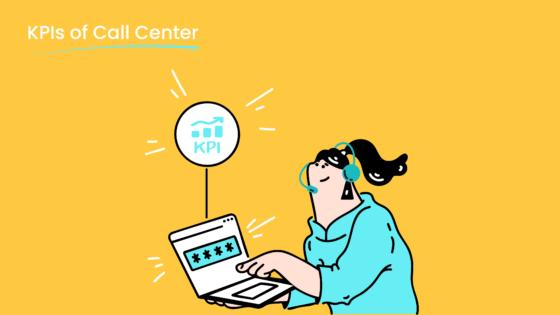
To optimize AHT, equip your team with tools that streamline workflows. Sobot's Voice/Call Center offers features like unified workspaces and real-time monitoring. These tools enable agents to access customer data instantly, reducing the time spent on each interaction. By improving AHT, you not only boost efficiency but also create a better customer experience.
Customer Retention Rate
Customer Retention Rate measures the percentage of customers who continue using your service over time. High retention rates signal positive customer experiences and satisfaction. For instance, businesses with retention rates above 90% often report higher profitability and stronger customer loyalty.
Improving retention requires a focus on delivering consistent, high-quality service. Sobot's Omnichannel Solution plays a key role here. By unifying communication channels like email, social media, and voice, it ensures seamless interactions. Customers receive personalized service, which fosters loyalty and encourages repeat business. Additionally, the platform’s analytics provide insights into customer behavior, helping you identify trends and address pain points proactively.
| KPI | Description | Importance for 2025 Predictions |
|---|---|---|
| Average Handle Time (AHT) | Duration of customer interactions, including hold time and follow-ups. | Indicates efficiency and quicker issue resolution, impacting retention. |
| Customer Retention Rate | Percentage of customers who continue to use the service over time. | High retention correlates with positive customer experiences. |
By tracking and improving these KPIs, you can stay ahead in 2025. Tools like Sobot’s Voice/Call Center and Omnichannel Solution provide the technology needed to enhance efficiency and loyalty, ensuring your business thrives in a competitive landscape.
How to Measure Customer Service KPIs Effectively
Tools and Software for Tracking KPIs
Tracking customer service metrics requires reliable tools that provide accurate data and actionable insights. Several software solutions excel in this area, offering features tailored to different business needs. Here's a comparison of some popular tools:
| Tool | Features | Pros | Cons |
|---|---|---|---|
| Salesforce CRM | Customizable CRM with third-party integrations and reporting capabilities | Centralized customer data management | Time-consuming setup |
| Domo | Business intelligence platform with data unification and visualization | Comprehensive data unification | Expensive |
| Power BI | Data extraction, modeling, and real-time monitoring | Advanced analytics | Requires training for new users |
| Tableau | Data visualization with interactive dashboards | Excellent data visualization | Expensive |
| Datapine | KPI analytics and data visualization | Excellent KPI analytics | Limited customization options |
| Smartsheet | Combines spreadsheet familiarity with project management features | Easy to set up and use | May require additional integrations |
For example, a marketing team used Smartsheet to track a product launch. The dashboard displayed real-time progress, helping the team meet deadlines efficiently. Similarly, Sobot's Voice/Call Center offers real-time monitoring and analytics, enabling you to measure KPIs like average resolution time and customer satisfaction with precision.
Best Practices for Accurate Data Collection
Accurate data collection is essential for measuring customer service KPIs effectively. Following best practices ensures the reliability of your insights:
- Multiple Data Sources: Use various sources to minimize biases and errors. For instance, combine customer feedback from surveys, social media, and live chat.
- Regular Updates: Validate and update data consistently to maintain its relevance.
- Automation: Implement tools like Sobot's AI-powered Voicebot to automate data collection, reducing human error.
- Data Normalization: Standardize data formats to make comparisons easier.
- Data Visualization: Use tools like Tableau or Sobot's analytics features to uncover trends hidden in raw data.
By adopting these practices, you can ensure your customer service metrics reflect the true performance of your team.
Overcoming Challenges in Measuring KPIs
Measuring customer service KPIs comes with challenges, but practical solutions can help you overcome them:
-
Challenge: Monitoring too many KPIs can lead to information overload.
Solution: Focus on key metrics like average resolution time and customer retention rate to align with your objectives. -
Challenge: Ensuring data accuracy and integrity.
Solution: Use data validation and cleansing processes. Sobot's unified workspace consolidates customer data, reducing fragmentation and errors. -
Challenge: Collecting qualitative customer feedback effectively.
Solution: Actively gather feedback through surveys, social media, and live chat. Sobot's omnichannel solution simplifies this process by integrating multiple communication channels.
By addressing these challenges, you can measure KPIs more effectively and improve the overall customer experience.
Leveraging Sobot's Voice/Call Center for Real-Time Monitoring
Real-time monitoring is essential for delivering exceptional customer service. It allows you to track ongoing interactions, identify issues as they arise, and make immediate adjustments to improve outcomes. Sobot's Voice/Call Center provides advanced tools to help you monitor and optimize your customer support operations effectively.
With Sobot's real-time monitoring features, you can oversee every call as it happens. This capability ensures that your team maintains high service standards. For example, supervisors can listen to live calls and provide instant feedback to agents. This proactive approach helps resolve customer concerns faster and enhances the overall experience. Studies show that businesses using real-time monitoring tools see a 20% improvement in first contact resolution rates.
Sobot's platform also offers detailed analytics to help you understand customer behavior. You can track metrics like call duration, wait times, and resolution rates in real time. These insights enable you to identify trends and adjust your strategies accordingly. For instance, if you notice a spike in call volume, you can reallocate resources to ensure no customer waits too long.
The system's AI-powered Voicebot further enhances monitoring by handling repetitive queries. This feature frees up agents to focus on complex issues, improving efficiency and customer satisfaction. Additionally, Sobot's global network ensures 99.99% uptime, so your customers always receive reliable support.
By leveraging Sobot's Voice/Call Center, you can transform your customer service operations. Real-time monitoring not only improves efficiency but also builds trust and loyalty among your customers. Learn more about Sobot's solutions here.
Strategies to Improve Customer Service KPIs
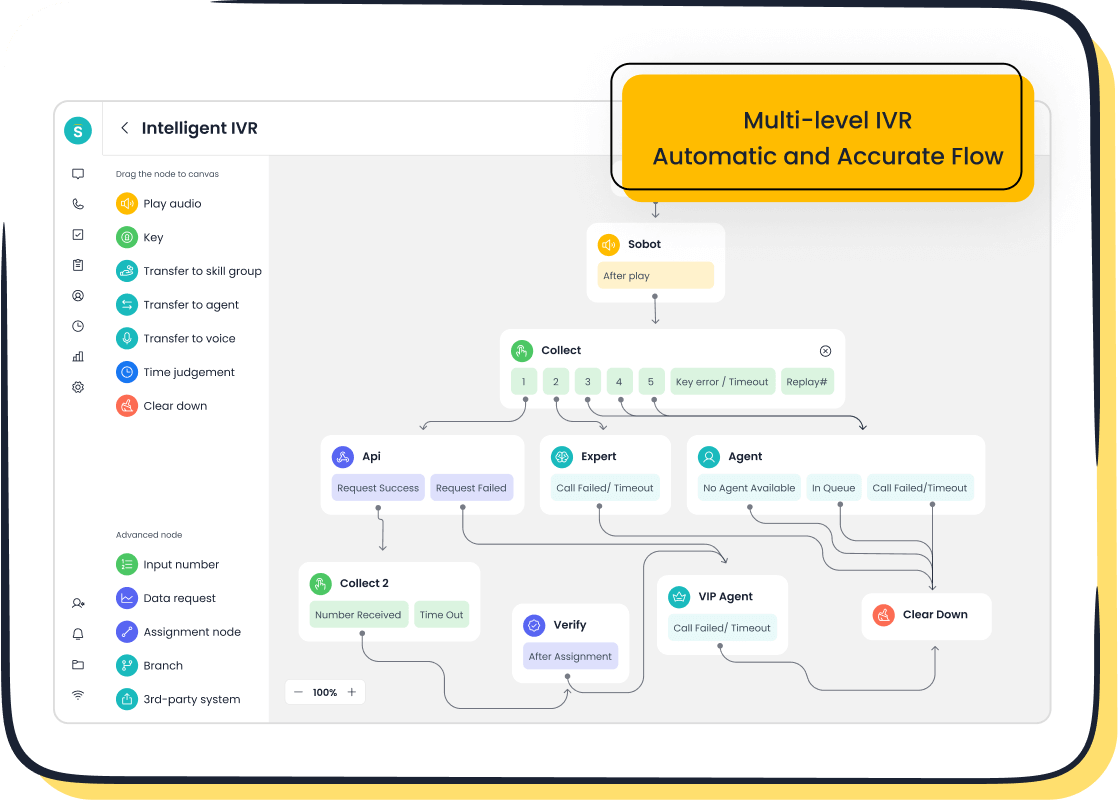
Setting SMART Goals for KPI Improvement
Setting SMART goals is one of the most effective ways to drive improvement in customer service KPIs. SMART stands for Specific, Measurable, Achievable, Relevant, and Time-bound. These goals provide a clear roadmap for achieving desired outcomes and eliminate ambiguity, which often hampers organizational efficiency. For example:
- Specific: Define the exact KPI you want to improve, such as increasing customer satisfaction scores.
- Measurable: Use quantifiable metrics, like achieving a 10% increase in CSAT within six months.
- Achievable: Ensure the goal is realistic given your resources and capabilities.
- Relevant: Align the goal with broader business objectives, such as enhancing customer retention.
- Time-bound: Set a deadline to track progress and maintain accountability.
A case study illustrates how SMART goals can lead to measurable improvements. For instance, a company aiming to increase its Net Promoter Score (NPS) by 9 points in 2024 achieved this by implementing targeted initiatives, such as personalized customer engagement strategies and faster response times. Tools like Sobot's Voice/Call Center can help you set and monitor these goals effectively. Its real-time analytics and AI-powered features streamline workflows, ensuring your team stays on track.
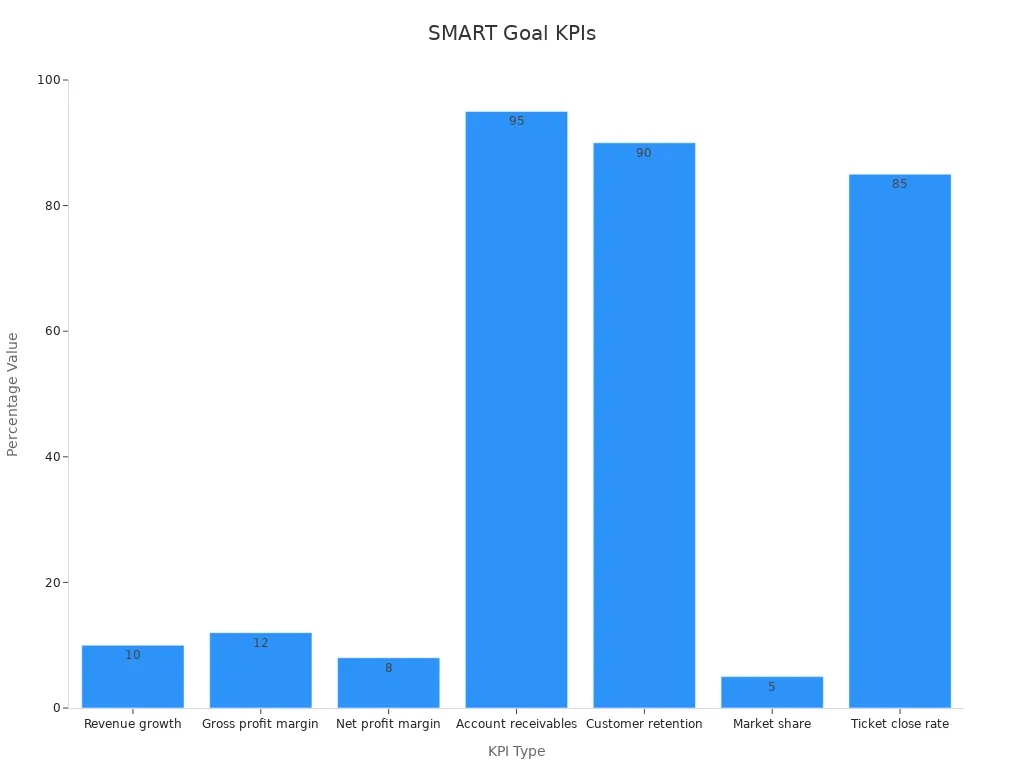
Collecting and Acting on Customer Feedback
Customer feedback is a goldmine for identifying areas of improvement in customer service. By collecting and analyzing feedback, you can uncover pain points in the customer journey and prioritize impactful initiatives. Studies show that regular tracking of customer satisfaction metrics not only prevents churn but also enhances brand differentiation.
Here are some actionable ways to leverage feedback:
- Conduct surveys to measure customer satisfaction (CSAT) and Net Promoter Score (NPS).
- Use tools like Sobot's Omnichannel Solution to gather feedback across multiple channels, including email, social media, and live chat.
- Benchmark your performance against industry standards to identify gaps and opportunities.
For example, a retail company improved its first contact resolution rate by 15% after analyzing feedback that highlighted delays in response times. By implementing Sobot's AI-powered Voicebot, the company reduced repetitive queries and empowered agents to focus on complex issues. This approach not only boosted customer satisfaction but also improved operational efficiency.
Using Data Analytics to Identify Trends
Data analytics is essential for uncovering hidden patterns in customer service performance. Statistical analysis reveals relationships within customer data, while predictive analytics forecasts future behavior. AI and machine learning further enhance data processing, enabling targeted strategies that improve customer experience.
To maximize the benefits of data analytics:
- Implement a customer analytics strategy that encourages collaboration across departments.
- Combine data from various sources, such as CRM systems and customer surveys, for deeper insights.
- Use predictive analytics to anticipate customer needs and refine service delivery.
For example, businesses using Sobot's Voice/Call Center gain real-time insights into metrics like average handle time and resolution rates. These analytics help identify weak points in service delivery and inform strategies for improvement. A company that noticed a spike in call abandonment rates used this data to optimize call routing, reducing wait times and enhancing customer satisfaction.
| Evidence Description | Impact on Customer Service KPI Tracking |
|---|---|
| Accurate KPI monitoring helps identify areas needing improvement. | Contributes to overall success of clients and agencies. |
| Real-time insights provide immediate understanding of operations. | Enables quick identification and resolution of challenges. |
| Consistent monitoring of KPIs maintains an engaged client base. | Drives business growth through actionable insights. |
| KPI tracking software automates data collection and analysis. | Provides valuable insights that enhance decision-making. |
| Reduces time spent on manual data gathering and visualization. | Frees up time for strategic analysis and campaign execution. |
| AI and machine learning enhance KPI tracking precision. | Automates data analysis, leading to more accurate insights. |
By leveraging tools like Sobot's analytics capabilities, you can transform raw data into actionable insights, ensuring continuous improvement in customer success metrics.
Training and Empowering Customer Service Teams
Empowering your customer service team is essential for improving performance and achieving better outcomes. Well-trained agents not only resolve issues faster but also enhance customer satisfaction and retention. To build a strong team, focus on these key strategies:
-
Provide Comprehensive Training: Equip your team with the knowledge and skills they need to handle various scenarios. Use role-playing exercises to simulate real-life interactions. For example, train agents to manage difficult conversations or resolve technical issues effectively.
-
Encourage Continuous Learning: Customer expectations evolve constantly. Offer regular workshops and access to online courses to keep your team updated on the latest trends and tools. For instance, training on AI-powered solutions like Sobot's Voicebot can help agents work more efficiently.
-
Foster a Supportive Environment: Create a culture where agents feel valued and supported. Recognize their achievements and provide constructive feedback. A motivated team performs better and contributes to higher customer satisfaction.
-
Empower Agents with Tools: Equip your team with advanced tools to streamline their workflows. Sobot's unified workspace, for example, consolidates customer data, enabling agents to resolve issues faster and with greater accuracy.
By investing in your team, you not only improve their efficiency but also create a positive experience for your customers. A well-trained team is the backbone of excellent customer service.
Implementing Technology Solutions Like Sobot's AI-Powered Voicebot
Technology plays a pivotal role in transforming customer service. Implementing solutions like Sobot's AI-Powered Voicebot can significantly enhance your operations and improve key performance indicators (KPIs). Here's how:
-
Reduce Inbound Volume: The Voicebot handles repetitive queries, reducing the workload on your agents by up to 20%. This allows them to focus on complex issues, improving overall efficiency.
-
Enhance Accuracy: With over 80% accuracy in providing correct answers, the Voicebot ensures customers receive reliable information. This builds trust and improves satisfaction.
-
Boost Customer Satisfaction: Businesses using Sobot's Voicebot have reported a 97% customer satisfaction score. The bot's ability to resolve issues quickly and efficiently contributes to this success.
-
Increase Retention and Revenue: By simplifying interactions, the Voicebot improves customer retention. For example, it increases the sign-off rate by about 35% and the cash-on-delivery collection rate by 40%.
| KPI Improvement | Measurement |
|---|---|
| Reduction in inbound discussion volume | 20% |
| Increase in positive feedback | 96% + |
| Correct answers provided by AI | Over 80% |
| Customer satisfaction (CSAT) score | 97% |
| Problem resolution rate | 85% |
| Increase in sign-off rate | About 35% |
| Increase in COD collection rate | About 40% |

Sobot's AI-powered Voicebot also integrates seamlessly with existing systems, ensuring a smooth transition. Its real-time monitoring and analytics provide actionable insights, helping you refine your strategies. By adopting such technology, you can deliver exceptional service while optimizing your resources.
The Future of Customer Service KPIs in 2025
Trends Shaping Customer Service Metrics
Customer service metrics are evolving rapidly in 2025, driven by changing customer expectations and technological advancements. Customers now demand faster resolutions, personalized interactions, and seamless experiences across all channels. Businesses must adapt by focusing on metrics that reflect these priorities. For instance, Customer Effort Score (CES) is gaining traction as companies aim to reduce friction in customer interactions. Similarly, First Contact Resolution (FCR) remains a critical metric, as resolving issues on the first attempt directly impacts satisfaction and loyalty.
Another trend is the integration of predictive analytics into KPI tracking. Predictive tools help businesses anticipate customer needs, enabling proactive service delivery. For example, analyzing historical data can reveal patterns that predict when a customer might churn, allowing teams to intervene early. These trends highlight the importance of adopting advanced tools like Sobot's Omnichannel Solution, which unifies customer interactions and provides actionable insights to improve key metrics.
The Role of AI and Automation in KPI Tracking
AI and automation are revolutionizing how businesses track and improve customer service KPIs. These technologies make the process more dynamic and efficient by offering capabilities that were previously unattainable:
- AI tools transform KPI tracking into a real-time process, enabling instant insights that drive improvement strategies.
- Automated reporting reduces the time spent on manual data gathering, allowing teams to focus on enhancing customer experiences.
- Real-time data analysis identifies trends and anomalies, helping businesses adjust their strategies promptly.
For example, Sobot's AI-powered Voicebot automates repetitive tasks, freeing agents to handle complex issues. This not only improves efficiency but also enhances metrics like Average Handle Time (AHT) and Customer Satisfaction Score (CSAT). By leveraging AI and automation, you can ensure your customer service operations remain agile and effective.
Staying Ahead with Omnichannel Solutions from Sobot
Omnichannel solutions are essential for staying competitive in 2025. They enable businesses to provide consistent and personalized service across multiple platforms, meeting customers where they are. Sobot's Omnichannel Solution exemplifies this approach by integrating voice, email, social media, and live chat into a unified workspace. This ensures seamless communication and improves customer satisfaction.
| Benefit | Description |
|---|---|
| Improve Efficiency | Automation and AI reduce response times and enhance service grading, maximizing team productivity. |
| Streamlined Access | Cost-effective access to various channels, improving experiences across different operational areas. |
| High Customer Satisfaction | Achieving a CSAT score of 97% by enabling customers to self-serve 22.2% of their inquiries. |
By adopting Sobot's solution, you can streamline operations, enhance customer experiences, and achieve measurable improvements in key metrics. This positions your business to thrive in an increasingly competitive landscape.
Tracking and improving customer service KPIs is essential for business success. These metrics provide measurable insights into performance, helping you identify areas that need attention. Enhanced tracking leads to better decision-making and operational efficiency, which directly impacts customer satisfaction and retention.
- Quantifiable measures of performance help you monitor progress.
- Identifying low-performing areas allows you to set improvement targets.
- Better tracking improves operational efficiency and decision-making.
Adopting tools like Sobot's Voice/Call Center simplifies KPI management. Its real-time monitoring and AI-powered features ensure your team delivers exceptional service. By leveraging these solutions, you can enhance customer experiences and drive better business outcomes.
FAQ
What are customer service KPIs, and why are they important?
Customer service KPIs are measurable metrics that track your team's performance in meeting customer needs. They help you identify strengths and weaknesses. For example, improving KPIs like First Contact Resolution (FCR) can reduce costs by 1% and boost customer satisfaction by the same margin.
How can Sobot's Voice/Call Center improve customer service KPIs?
Sobot's Voice/Call Center enhances KPIs like Average Handle Time (AHT) and Customer Satisfaction Score (CSAT). Its AI-powered Voicebot handles repetitive queries, while smart call routing ensures faster resolutions. These features streamline workflows, helping you achieve better results and happier customers.
What is the best way to measure customer satisfaction?
You can measure customer satisfaction using the CSAT metric. Ask customers to rate their experience on a scale of 1 to 5. Tools like Sobot's Omnichannel Solution simplify this process by collecting feedback across multiple channels, such as email and live chat.
How does AI impact customer service KPI tracking?
AI automates data collection and analysis, making KPI tracking faster and more accurate. For instance, Sobot's AI-powered Voicebot provides real-time insights into metrics like FCR and CES. This helps you identify trends and adjust strategies to improve customer service performance.
What are the emerging customer service KPIs for 2025?
Emerging KPIs include Average Handle Time (AHT) and Customer Retention Rate. These metrics focus on efficiency and loyalty. Sobot's solutions, like its Voice/Call Center, help you optimize these KPIs by providing tools for real-time monitoring and seamless customer interactions.
See Also
Essential Strategies for Effective Call Center Quality Management
Ten Effective Ways to Enhance Live Chat Satisfaction
The Best Customer Service Software Options for 2024
Improving Call Center Efficiency Through Effective Monitoring
